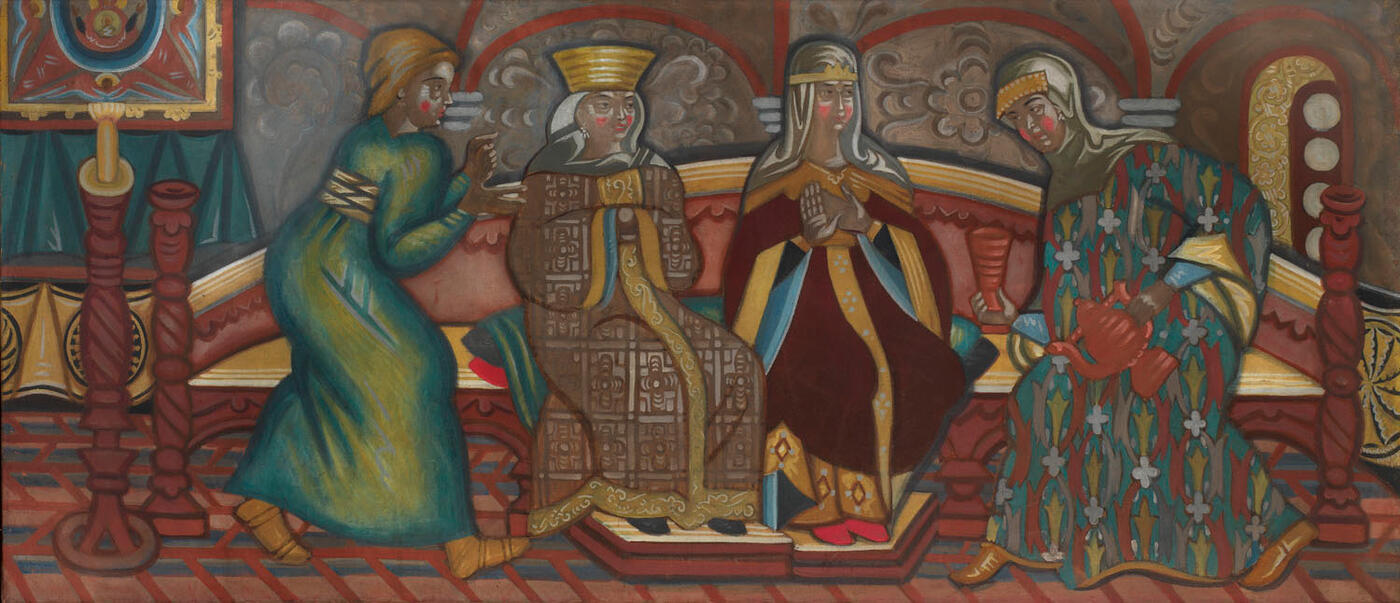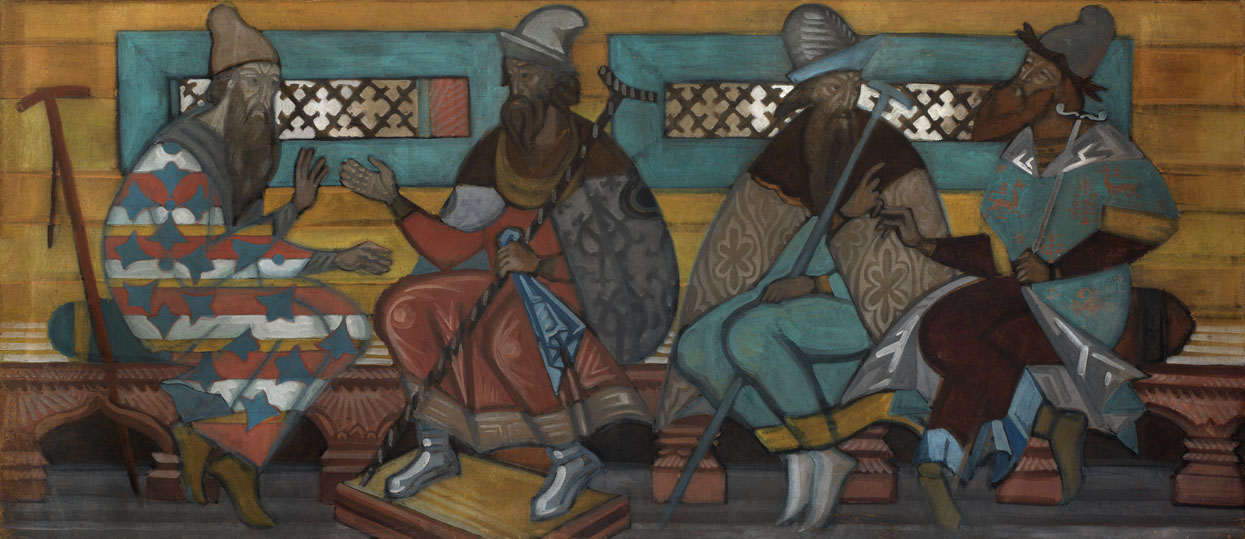MacDougall Auctions 12-18 June 2008
12 June 2008

13. STELLETSKY, DMITRI 1875-1947
In the Princes' Chamber diptych, signed inscribed "Paris" and dated 1915, also inscribed 'N.38' and 'N.39' On the reverse.
Two oil on canvas, 79.5 by 185.5 and 80 by 185.5 cm. respectively.
150,000-200,000
Provenance: Estate of the artist.
Private collection, France.
Exhibited: Tentoonstelling Mir Iskusstva, Galerie la Boetie, June 1921.
The monumental decorative diptych presented here for auction, In the Princes’ Chamber, illustrates yet another important aspect of the creative oeuvre of Dmitri Semenovich Stelletsky. Completed in 1917, it marks the start of a cycle of Stelletsky’s works connected with the interior design of wealthy villas and private residences in France and Belgium. It is well known that Stelletsky had considerable success in interior design on the French Riviera using the Old Russian style. One of the artist’s clients, delighted with his work, made him a gift of land in La Napoule close to Cannes over and above the fee which they had agreed. There Stelletsky built the spacious studio known as La Toit (The Roof), the walls of which he decorated with large panels. According to contemporary eye witnesses, “Igor’s archers were looking out from them. Soldiers with bows and arrows and entire cavalry regiments, and then there would be a psaltery player, and everything around you would be filled with Old Rus”.
It is rare for such a high quality work from Stelletsky’s pre-Revolutionary French period as In the Princes’ Chamber to make an appearance on the market. Both canvases are superior examples of Stelletsky’s decorative, fairy tale works and provide a fine example of the symmetrical horizontal composition so beloved of this master. The diptych illustrates Stelletsky’s concept of the paths of development of Russian art as a combination of “the religious hope of orthodoxy, the decorative taste of folklore and vestiges of pagan antiquity”. A refined connoisseur of the culture and way of life of Old Rus, Stelletsky ably incorporated into his composition elements of the authentic everyday life and dress of the Grand Princes. Floral paintings of vaulted rooms, characteristic high carved luminaries, slightly devitrified opaque windows fitted with wrought iron grilles and even a fragment of an icon painting of Orantes, behind the backs of the seated princely pair.
At the same time, behind the historical narrative of the composition and careful and extensive usage of icon painting methods, the influence of modern art is also evident. The flat ornamental nature of the images and the generalised treatment of the figures, which take up virtually the entire foreground of the panel, unify the different parts of the diptych not only in terms of its subject, but also from the point of view of composition. The aspect of the figures has been selected with a view to closing and centring the stretched out composition as far as possible. The attendants positioned at the sides are turned towards the princely pair seated in the centre, whereas the chatting boyars of the Duma are looking towards one another in pairs. Unity of colour imbues the assembled figures with a sense of harmony. There is a predominantly red and blue colour scheme, supplemented with yellowish ochre and brown shades and a grandiose sweeping painting style.
The themes which the artist was developing in these panels remained unchanged throughout his life, namely generic themes in a spirit of nationalism involving period costume and settings. Even in the West, Stelletsky’s work remained self contained and was virtually immune from modern trends, preserving as it did a lively and sincere love for the antiquity of his distant homeland. The artist scarcely ever worked on such large compositions without first having made preliminary sketches. He considered the working out of a subject in tempera on paper or card, with subsequent transfer of the image onto canvas, to be an immutable rule of icon painting and always adhered to this principle.

Notes on symbols:
* Indicates 5% Import Duty Charge applies.
Ω Indicates 20% Import Duty Charge applies.
§ Indicates Artist's Resale Right applies.
† Indicates Standard VAT scheme applies, and the rate of 20% VAT will be charged on both hammer price and premium.